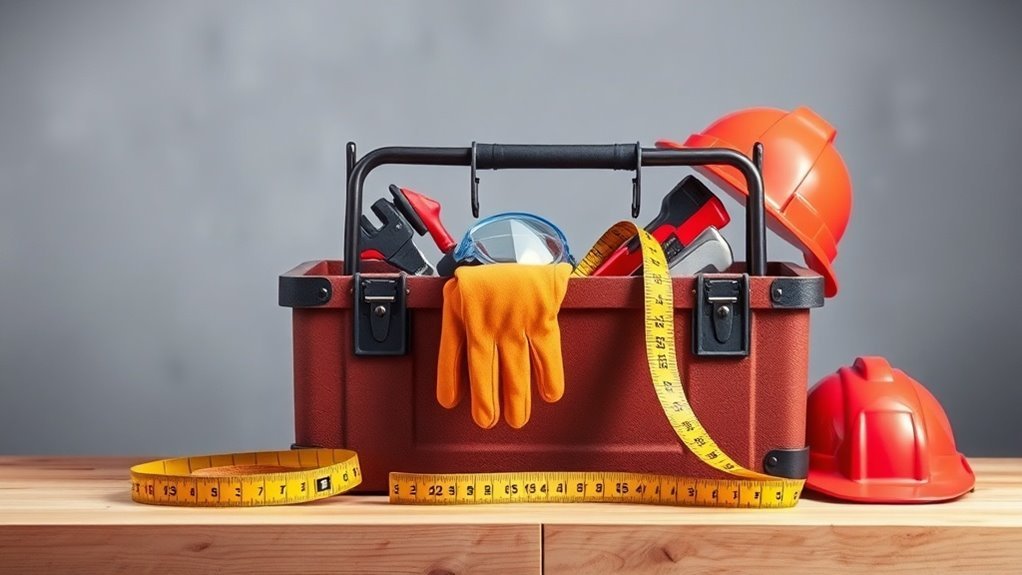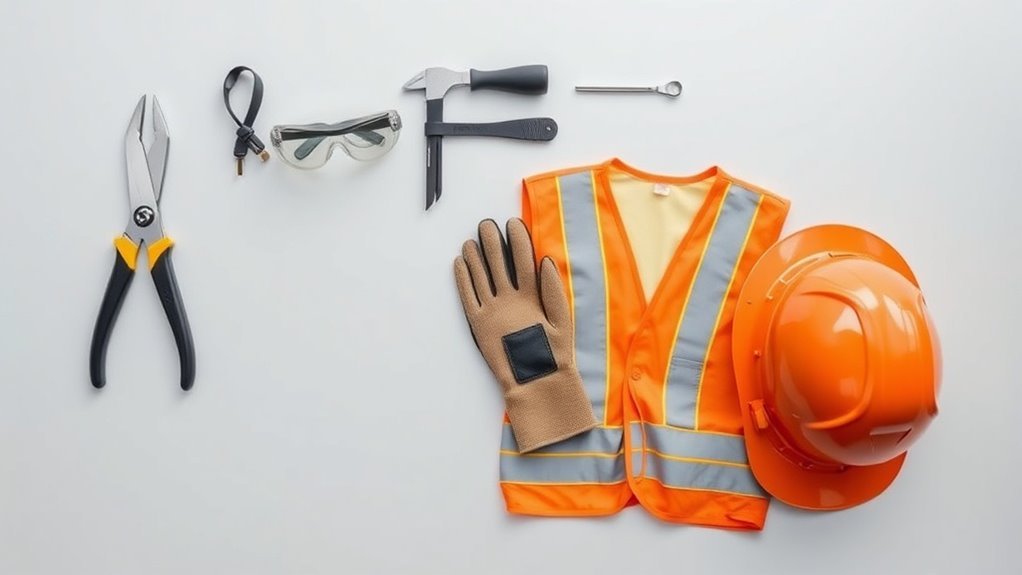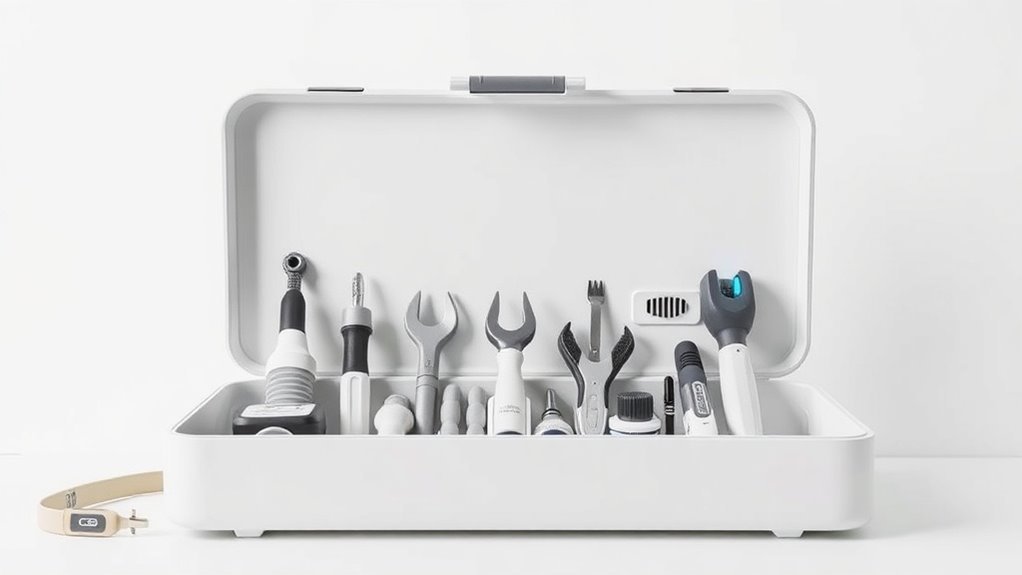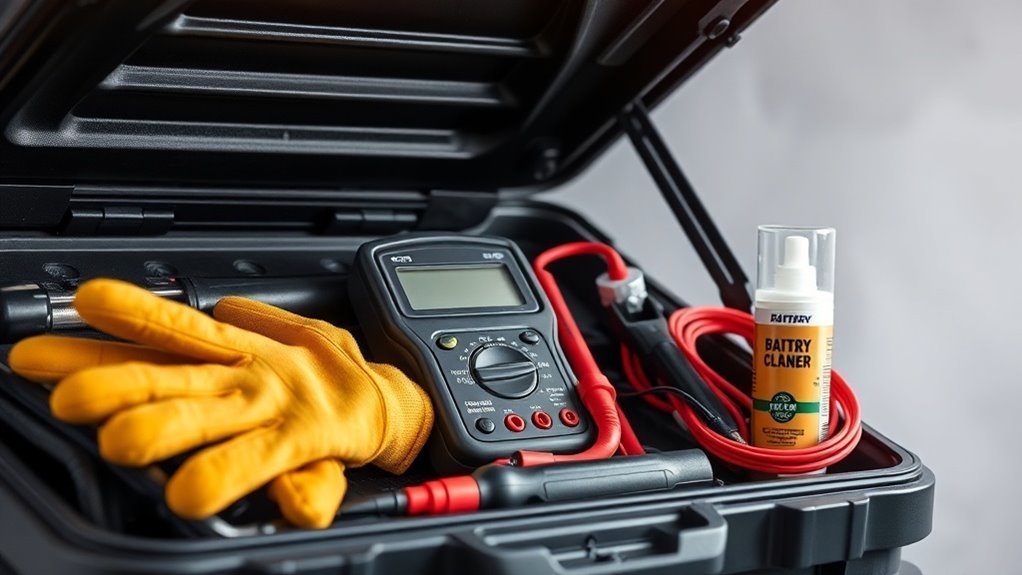Future Trends in Smart Safety Gear

Future trends in smart safety gear focus on advanced wearables equipped with real-time monitoring, AI integration, and enhanced communication tools. You’ll see gear that tracks essential health metrics and environmental conditions, promoting a safer workplace. Customization options will let you personalize your gear, while intuitive user interfaces improve usability. Plus, there’s a push for sustainable materials and compliance with regulatory standards. Explore how these innovations can elevate your safety practices and improve your work environment.
Key Takeaways
- Increased integration of AI and machine learning will enhance real-time hazard prediction and personalized safety measures in smart gear.
- Advanced communication tools will promote hands-free connectivity, improving team collaboration and emergency response efficacy.
- Customization options for smart safety gear will allow users to reflect personal style while enhancing comfort and functionality.
- Wearable technology will further evolve to monitor health metrics, promoting proactive health management and early hazard detection.
- Regulations will drive innovation towards eco-friendly materials and sustainable production methods for the manufacturing of smart safety gear.
The Rise of Wearable Safety Technology
As industries evolve and workplace safety standards increase, you may notice a growing trend towards wearable safety technology. These devices are designed to enhance your safety and performance, integrating seamlessly into your daily tasks.
From smart helmets equipped with augmented reality to vests that monitor essential signs, wearable tech helps you stay informed and protected. Imagine receiving real-time alerts about potential hazards in your environment, allowing you to take immediate action.
Wearable tech, like smart helmets and monitoring vests, keeps you informed of hazards and enhances your safety on the job.
Additionally, these tools often collect valuable data, enabling employers to analyze safety practices and improve overall conditions. By embracing this technology, you’re not only investing in your own safety but also contributing to a culture of accountability and awareness within your workplace. Moreover, many of these devices incorporate innovative safety features to provide enhanced protection for users.
The future of safety gear is here, and it’s personal.
Enhancements in Communication Tools

As safety gear evolves, communication tools are getting smarter and more efficient.
You’ll find features like integrated voice activation that let you send commands without lifting a finger, and real-time location sharing to keep your team connected. These enhancements not only improve safety but also streamline collaboration in the field. Additionally, the integration of Bluetooth and app features allows for seamless connectivity that enhances functionality and user convenience.
Integrated Voice Activation
How can integrated voice activation revolutionize communication in smart safety gear?
Imagine being able to relay important information without having to stop what you’re doing. With voice-activated technology, you can easily communicate through your safety gear, whether it’s a helmet or a vest. Just a simple command can alert your team or activate critical safety features, keeping your hands free and your focus sharp.
This means faster responses in emergencies and seamless collaboration among workers. You’ll no longer need bulky communication devices; everything can be accessed through your voice.
As this tech evolves, you’ll find that it enhances not just safety but efficiency, allowing you to maintain productivity while ensuring you’re always connected in potentially hazardous situations.
Real-Time Location Sharing
With integrated voice activation paving the way for smoother communication in hazardous environments, real-time location sharing takes safety and teamwork a step further.
Imagine you’re in a challenging situation, and your smart gear can pinpoint everyone’s location instantly. This feature not only enhances your situational awareness but also allows you to coordinate efforts seamlessly.
Whether you’re in a construction zone or a rescue operation, knowing where your teammates are is essential. You’ll receive updates on their movements, enabling quick responses to emergencies.
Plus, the data can be analyzed later to improve safety protocols. Ultimately, real-time location sharing empowers you to work smarter, ensuring everyone’s safety and efficiency on the job.
It’s a game changer for modern safety practices.
Real-Time Monitoring and Data Tracking

As smart safety gear evolves, it’s focusing on real-time monitoring and data tracking to enhance your safety experience.
With wearable technology integrated, you’ll have access to critical health metrics and immediate emergency response activation right at your fingertips.
This shift not only keeps you informed but also adds a layer of security that can be life-saving in critical situations. By integrating ergonomic principles, manufacturers can also ensure that this smart gear remains comfortable for users while providing essential data.
Wearable Technology Integration
While you may be familiar with traditional safety gear, the integration of wearable technology is transforming its role in real-time monitoring and data tracking.
Now, safety gear can do so much more than just protect; it’s equipped with sensors that gather data on your environment and your body’s performance. Imagine your helmet tracking your head movements or your vest monitoring your heart rate. This data is transmitted instantly, allowing you to assess risks or fatigue levels on the fly.
You can even share this information with your team, enabling faster responses in emergencies. As you engage in activities, this technology guarantees you’re not just safe, but also informed—enhancing your overall situational awareness for better decision-making.
Health Metrics Analysis
When it comes to safety, understanding your health metrics in real-time can be a game-changer. With advanced smart safety gear, you can track critical health information instantly, giving you insights that could help prevent accidents or health issues. Imagine wearing gear that monitors your heart rate, oxygen levels, and even stress indicators. This data allows you to adjust your actions accordingly, keeping you safer on the job or during high-risk activities.
Here’s a quick overview of essential metrics you might see:
| Metric | Importance |
|---|---|
| Heart Rate | Indicates exertion levels |
| Oxygen Saturation | Measures breathing efficiency |
| Body Temperature | Helps detect overheating |
| Stress Levels | Assesses mental well-being |
These insights can enhance your overall safety and performance.
Emergency Response Activation
Real-time monitoring and data tracking play an essential role in emergency response activation, ensuring you’re never alone in a crisis.
With smart safety gear equipped with GPS and health sensors, your location and crucial signs can be instantly shared with emergency services. If an accident happens, these devices can trigger alerts, notifying first responders even before you can make a call.
They can also provide critical data on your condition, enhancing response effectiveness. For instance, heart rate and oxygen levels can guide medical professionals on-site.
Additionally, some gear connects directly to family members, allowing loved ones to stay informed. This seamless integration of technology not only enhances your safety, but it also reassures you that help is always at hand.
Integration of AI and Machine Learning
As smart safety gear evolves, the integration of AI and machine learning becomes essential in enhancing user protection and performance.
These technologies analyze real-time data, helping gear adapt to various conditions and user behaviors. For instance, smart helmets can predict potential hazards based on the environment and alert you before you even notice danger.
Machine learning algorithms also personalize your gear’s responses, optimizing safety measures for your unique patterns. This means safer work environments, where protection isn’t just reactive but proactive.
By utilizing AI, your gear can also learn from past incidents, continuously improving its protective capabilities. This advancement highlights the importance of adhering to safety standards and certifications, ensuring that the gear not only features cutting-edge technology but also meets essential safety requirements.
Ultimately, the fusion of AI and machine learning in smart safety gear signifies a leap toward smarter, more responsive safety solutions tailored just for you.
Sustainable Materials and Eco-Friendly Designs
While the demand for safety gear increases, so does the need for sustainable materials and eco-friendly designs in their production. You’re likely to see manufacturers prioritizing eco-conscious practices, which not only benefit the environment but also appeal to consumers seeking sustainable options.
The rising demand for safety gear drives the pursuit of sustainable materials and eco-friendly designs in manufacturing.
Here are some emerging trends you should watch for:
- Recycled Materials: Gear made from plastic waste or upcycled fabric guarantees less pollution and resource depletion.
- Biodegradable Components: Products that break down naturally reduce landfill impact once they reach the end of their lifespan.
- Low-Impact Production: Manufacturers adopting energy-efficient processes and renewable energy sources help minimize their carbon footprint. Additionally, supporting battery recycling programs is crucial for reducing hazardous waste associated with tool disposal.
Embracing these innovations secures a safer, greener future for everyone.
Customization and Personalization of Gear
With advancements in technology, the customization and personalization of safety gear have become more accessible than ever. You can now tailor your gear to fit your specific needs, preferences, and style.
Many brands offer modular designs, allowing you to swap out components or add features based on your unique requirements. You might choose colors, patterns, or even personalized engravings that reflect your personality, making safety gear feel less generic and more like an extension of yourself.
Additionally, some companies are introducing smart technology that learns your habits, adjusting the gear accordingly. This level of personalization not only enhances comfort and functionality but also boosts your overall confidence while performing tasks, ensuring you maintain safety without compromising on style. Furthermore, the integration of smart technology enhances user experience, making safety gear more intuitive and responsive to individual needs.
Enhanced User Interfaces and Experience
When you interact with smart safety gear, an intuitive user interface can make all the difference in your experience. A seamless interface not only enhances usability but also boosts your confidence while you’re relying on technology for protection.
Advanced designs are making it easier for you to access important information quickly, allowing for better decision-making in critical situations.
Here are some key features to look for:
- Voice Activation: Hands-free controls streamline operation while keeping your focus where it needs to be.
- Haptic Feedback: Subtle vibrations provide alerts without drowning out your surroundings.
- Real-time Data Display: Intuitive dashboards present essential stats at a glance, ensuring you’re always informed.
With these enhancements, smart safety gear becomes more user-friendly, empowering you to stay safe.
Regulatory Changes and Industry Standards
As smart safety gear evolves, regulatory changes and industry standards are becoming increasingly essential to confirm user protection and product reliability. You’ll need to stay informed about these regulations to make certain your gear meets safety expectations. Organizations like ISO and ANSI are shaping these standards, and adhering to them will build trust among users.
Here’s a quick overview of key regulatory aspects:
| Aspect | Details |
|---|---|
| Compliance Standards | Confirms minimum safety levels |
| Testing Requirements | Validates performance under use |
| Certification Bodies | Independent entities for assurance |
| User Education | Guidelines on safe usage practices |
Staying updated on these standards helps you make informed choices, confirming both safety and compliance in a fast-evolving industry.
The Role of Smart Safety Gear in Emergency Response
Modern advancements in smart safety gear are greatly transforming emergency response efforts. You’ll find that these innovations enhance the efficiency and effectiveness of first responders during critical situations.
With tools that promote real-time data sharing and connectivity, responders can make informed decisions quickly.
Key features of smart safety gear include:
- Wearable Sensors: They monitor essential signs and environmental hazards, guaranteeing responders remain safe.
- Geo-Location Tracking: This allows command centers to pinpoint the exact location of each responder, streamlining coordination during emergencies.
- Integrated Communication Systems: These facilitate uninterrupted communication among team members, improving collaboration and response times.
As these technologies continue to evolve, they’re set to redefine how emergencies are managed, ultimately saving lives and improving outcomes.
Questions
How Does Smart Safety Gear Impact Overall Workplace Safety Culture?
Smart safety gear enhances workplace safety culture by promoting accountability, encouraging proactive behaviors, and improving communication. When you use advanced technology, it fosters a shared commitment to safety, ultimately leading to a more vigilant and informed workforce.
What Are the Costs Associated With Implementing Smart Safety Gear?
Implementing smart safety gear can cost around $1,000 per worker, but companies often see a 20% decrease in accidents. While initial expenses might seem high, the long-term savings from reduced injuries can’t be overlooked.
Can Smart Safety Gear Be Used for All Industries?
Yes, smart safety gear can be used in various industries, including construction, manufacturing, and healthcare. Its adaptability makes it valuable for enhancing safety and efficiency, though some modifications might be needed for specific applications.
How Is User Data From Smart Safety Gear Protected?
Imagine your safety gear as a fortress; it encrypts your data, ensuring unauthorized access is a distant thunderstorm. By employing strict protocols and regular updates, it safeguards your personal information effectively, keeping you secure in any industry.
What Training Is Needed to Effectively Use Smart Safety Gear?
To effectively use smart safety gear, you’ll need training on device functionalities, data interpretation, and safety protocols. Familiarizing yourself with software updates and practicing hands-on skills is essential for peak performance and safety awareness.
Conclusion
As we look to the future of smart safety gear, it’s clear that these advancements will transform how we protect ourselves and respond to emergencies. Remember, “an ounce of prevention is worth a pound of cure.” With enhanced communication tools, real-time monitoring, and sustainable materials, smart safety gear isn’t just a trend; it’s an essential investment in safety and well-being. Embracing these innovations will help you stay ahead, ensuring that you’re always prepared for whatever comes your way.






